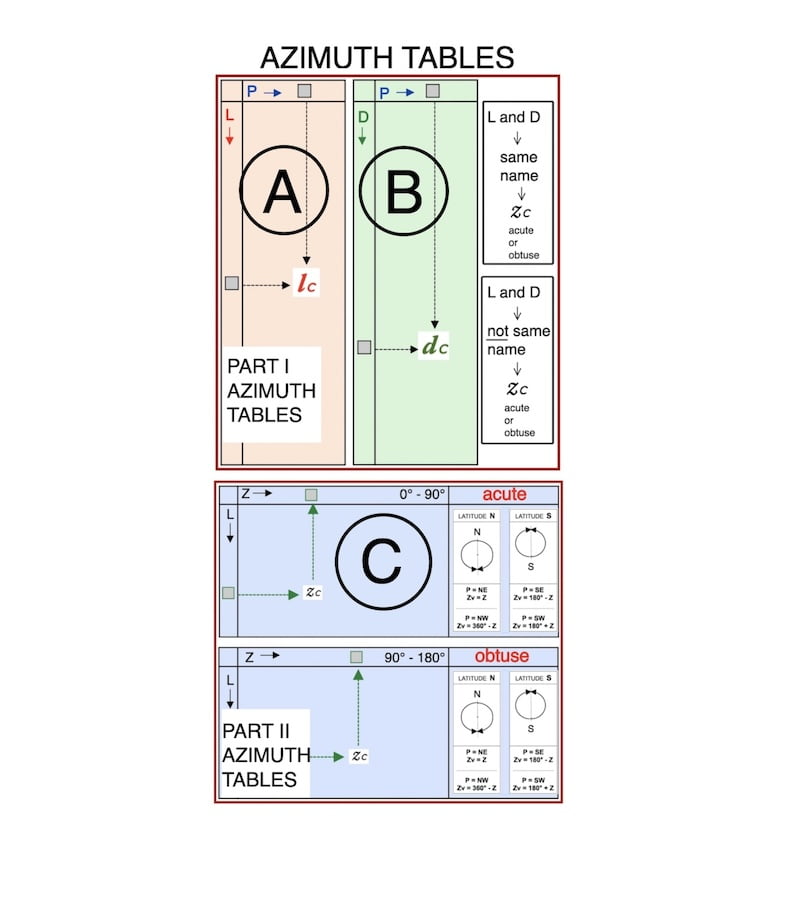Azimuth Tables at Sea Option: Instead of calculating the azimuth, you can choose to use the azimuth tables, often referred to as ABC tables.
⚓ Note:
Z = intermediate azimuth (0°⎼180°).
Zv = True azimuth (0°⎼360°).
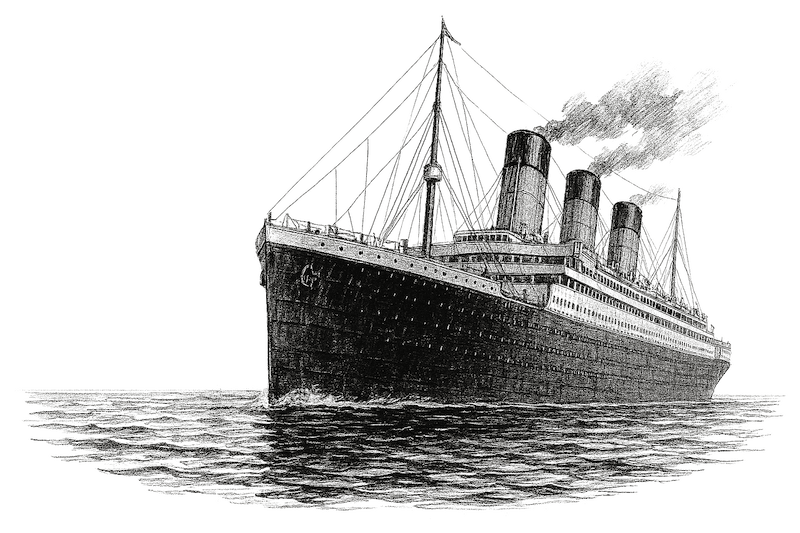
On this page, you will find an explanation and an example of how to use these tables. Moreover, you can find:
FOUR EXERCISES OF THE AZIMUTH TABLES WITH SOLUTIONS
LA ROCHELLE EXERCISE OPTION TABLES WITH SOLUTION
1 Azimuth tables for download:

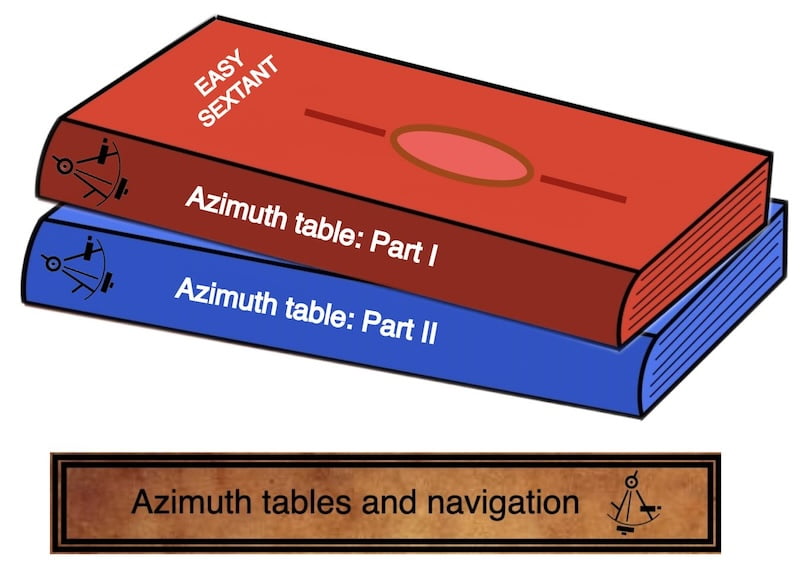
While traditional printed tables offer reliability, digital tools like our scientific calculator provide convenience and speed.
The primary focus of our website is to offer guidance on the precise calculation of the Line of Position (LOP).

Azimuth Tables at Sea: Azimuth (Zv) or True Azimuth
Azimuth is a mathematical concept used in navigation and surveying to describe the direction of a point relative to a reference direction, typically north.

It is usually measured in degrees, clockwise from north, and ranges from 0° to 360°.
Azimuth Zv: counted from the north cardinal point, from 0° to 360° (clockwise)
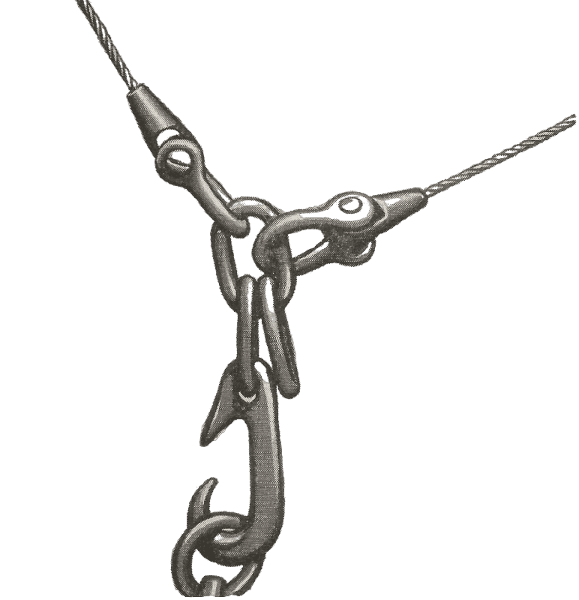
Azimuth Tables at Sea Option:
Introduction azimuth tables
Technique used: azimuth by time
Hence, after finding the calculated altitude, the azimuth Zv must be found to within half a degree.
My tables follow the same principle as the classic ABC tables. They apply to all celestial bodies and are timeless. The limits of use are up to a maximum latitude of 68° and a declination of 68°. You can download and print them for free from this page.
Firstly, the tables I present are slightly larger than the classic azimuth tables, as the reading is always from top to bottom and not from top to bottom and bottom to top, a technique used to reduce the amount of sheets but which can sometimes be tedious to use.

I do not see any other simple method for explaining azimuth tables other than by example.
Furthermore, on this page, you will find an example of how to calculate the azimuth with the tables
Undoubtedly using the azimuth tables can be a bit laborious at first, but after completing the exercises and practicing again, you will quickly become accustomed to them.
In fact, you may find that you become more proficient with the tables than with using a scientific calculator to calculate Zv.
Moreover, the clarifications presented in the margins of every table sheet are very beneficial, particularly after a long break from using them.
Azimuth Tables at Sea Option
worksheet for the tables
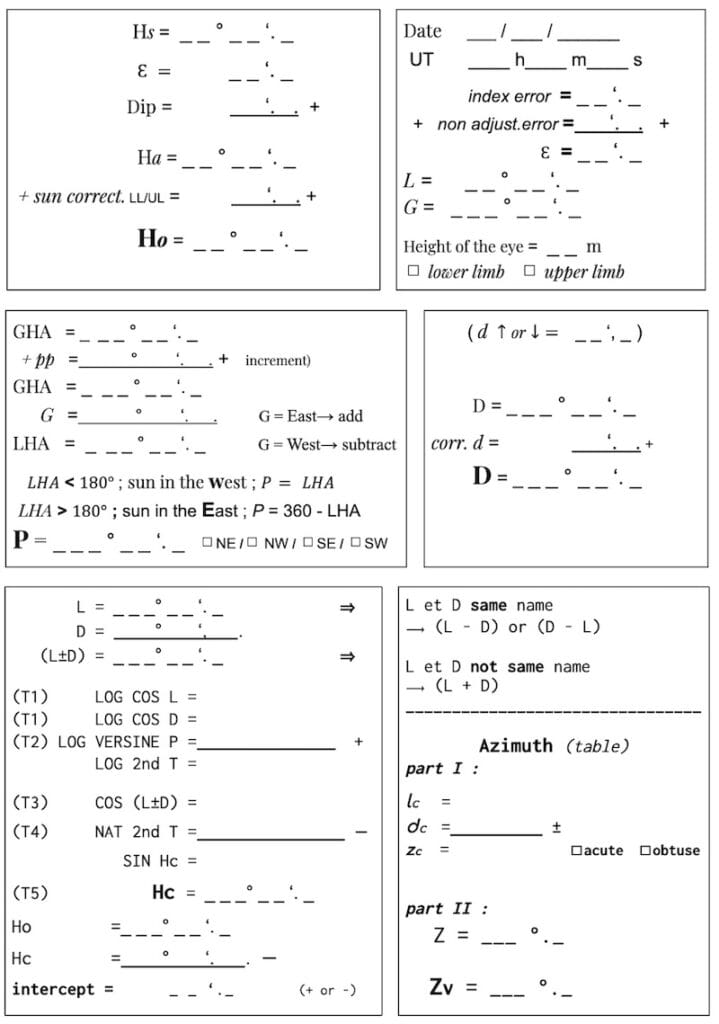


Azimuth Tables at Sea Option: Part I and Part II
A Quick Overview
Part I
(L)atitude
(D)eclination
(P)olar angle

INPUT:
P and L → lc
P and D → dc
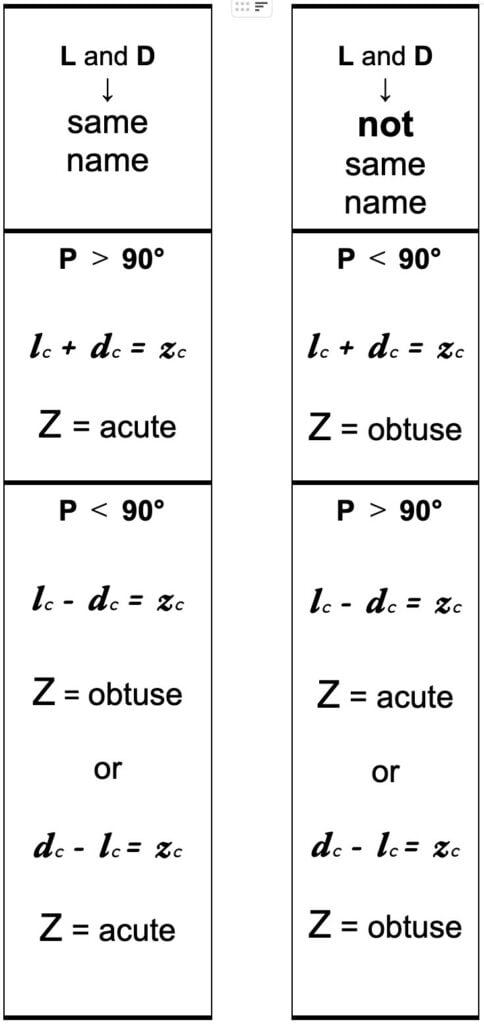

OUTPUT:
lc and dc → zc
Z = acute or obtuse
With these two elements, we proceed to part II of the tables
Part II (two volumes: acute and obtuse)
In Part II, the tables give Z (0°–180°). At the end, you must always convert Z into Zv (true azimuth) as indicated in the right-margin tables, which extend from 0° to 360°.

INPUT:
L et zc. (From Part I)
Use the 0°⎼90° (acute) pages if Z is acute, from Part I.
OR
Use the 90 ⎼180° (obtuse) pages if Z is obtuse, from Part I.
OUTPUT:
Z
Then transform Z to Zv (True azimuth) using the tables in the right margin, which can be found on each page in Part Two.
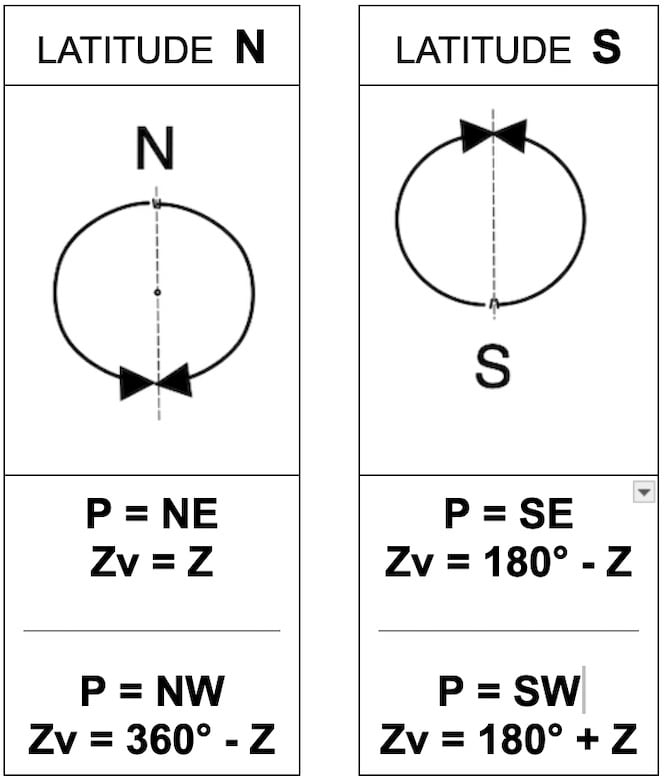
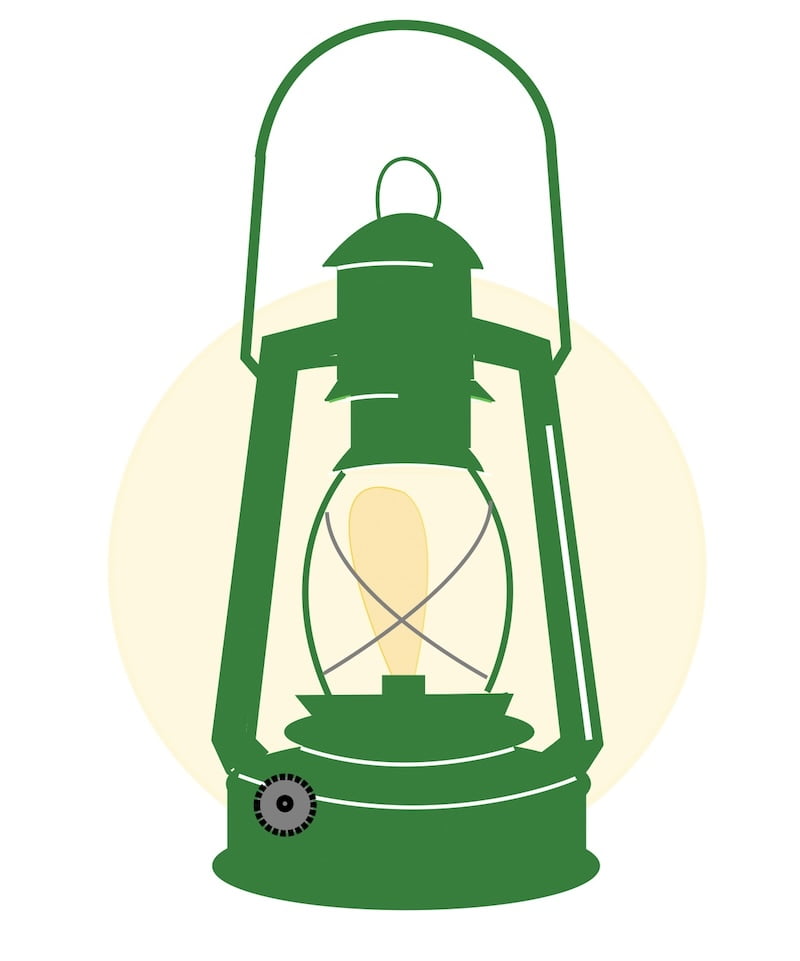
complementary information:
lc, dc and zc do not have any specific meaning in navigation but are used only for these tables.
Z is the azimuth between 0° to 180°, while Zv is the true azimuth between 0° to 360°
The tables have been calculated using the following formulas:
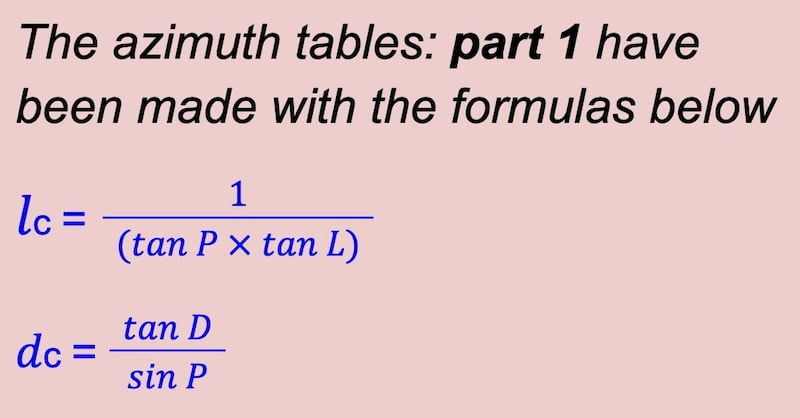

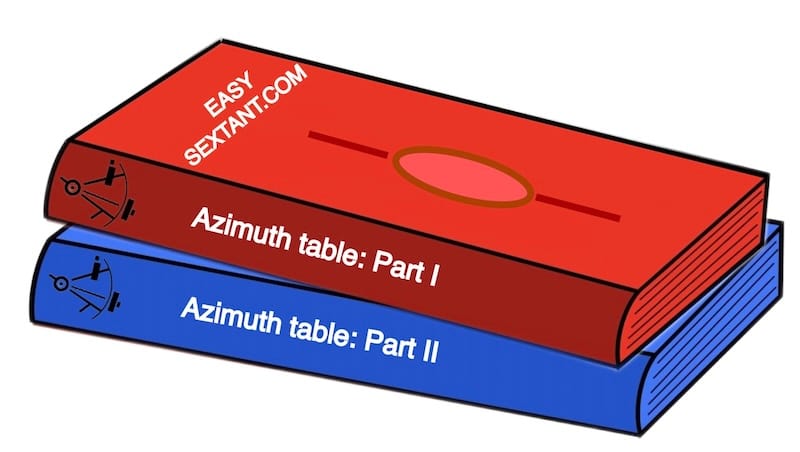
Azimuth Tables at Sea Option:
explanation through an example.
Azimuth tables: PART I

(L)atitude = 12° N
(D)eclination = 17° S
(P)olar angle = 10° NW
(the Northern Hemisphere), sun in the West
(Do not confuse it with West longitude.)
Find Zv with azimuth tables
You also find this page see below
Page P = ( 8 to 14°)

P and L → lc = 1.21
P and D → dc = 1.76
In the right margin of each page in Part I are the two tables below

We no longer use the rule of signs but same name or not same name !

all tabular values are always positive.
In our example:
L et D: NOT SAME NAME
(L = North and D = South)
P < 90°
Conclusion:

zc = lc + dc
(1.21 + 1.76 = 2.97)
Z = obtuse
(between 90° to 180°)
Next, we go to part II
Azimuth Tables at Sea Option:
Azimuth tables: PART II (Two volumes)
Note that the acute section ranges from 0° to 90° degrees, while the obtuse section ranges from 90° to 180° degrees.
With latitude L = 12° N and zc = 2.97 we obtain Z.
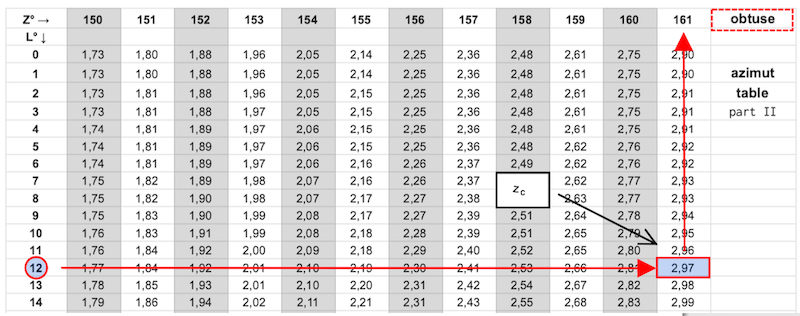
( Z is obtuse in our example)
In both cases (acute and obtuse), the horizontal line of the latitude 12° N displays somewhere the value zc = 2.97.
Therefore, unfortunately, mixing acute and obtuse angles is where we easily make a mistake (see below)!
acute
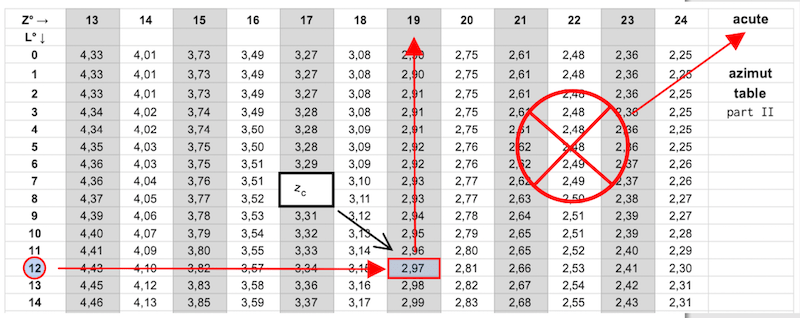
obtuse

Z is therefore 161°
But we need to find Zv (modern notation of 0° to 360°)
Also, in the right margin of each page in Part II are the two tables below
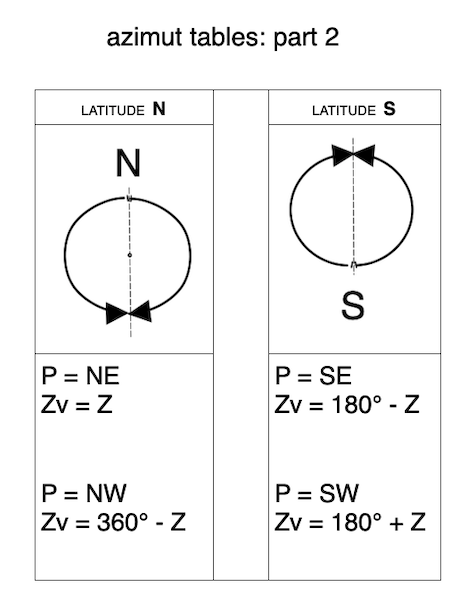
With Z = 161° and P = NW
Since P = NW (sun in the West, Northern Hemisphere), Zv = 360° – Z.
Zv = 360° – Z
Zv = 360° – 161° = 199°
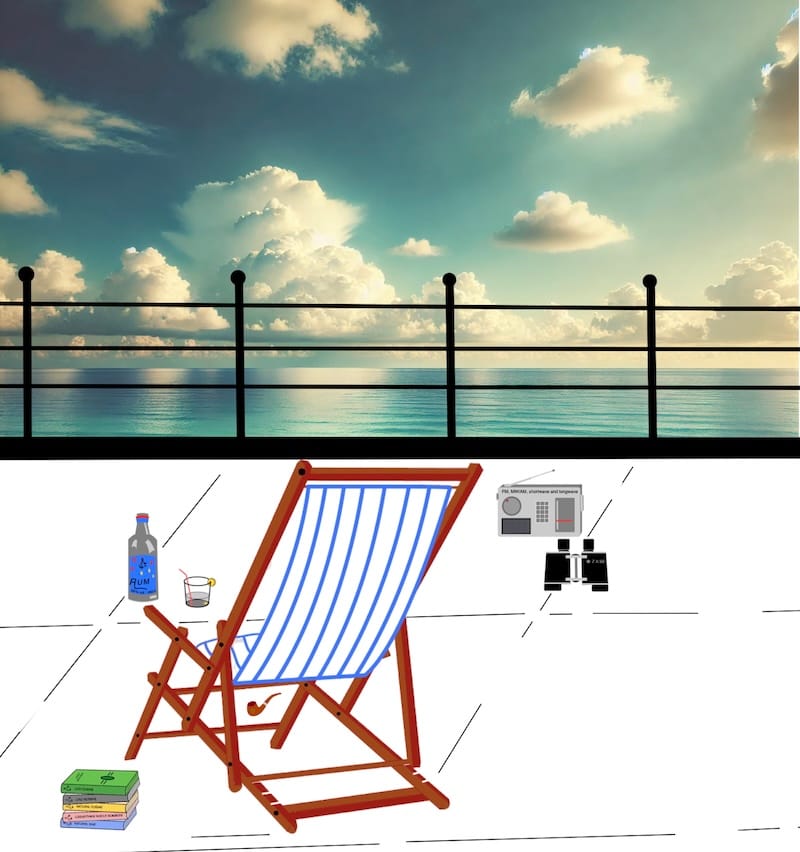
Azimuth Tables at Sea Option:
After grasping the concept of these azimuth tables, you can move on to the four exercises on the Astronomical Azimuth Table Exercises page.
